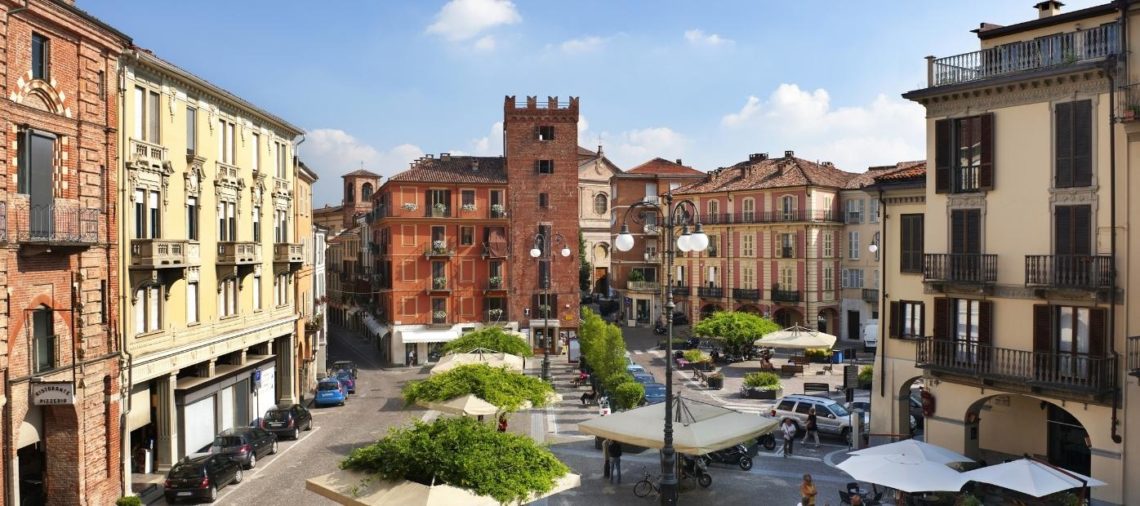A stroll through Asti‘s narrow cobbled streets and 18th-century squares is an excellent way to spend an Italian holiday: you’ll travel back in time, but you can always stop for a hearty meal and a glass of wine, ending the day in a modern and comfortable hotel room.
Asti is a medium-sized town in the valley of the Tanaro river, in the Piedmont region of north-western Italy. More precisely, Asti is a 40-minute drive from Turin and an hour from Milan; by train, the distance between Milan and Asti takes 2 hours, so you can consider this charming city as an escape for a day or more. Here’s what to visit in Asti:
What to visit in Asti, a city with a complicated history
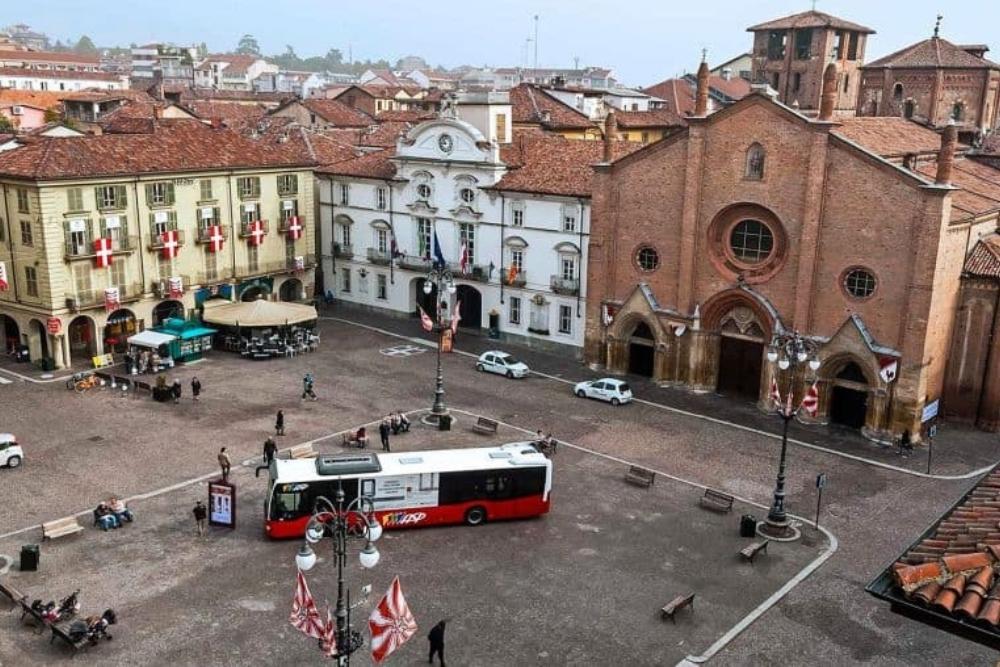
The complicated history of these places begins with a fortified Roman military camp and, later, the Visigoth invasion. Asti was an active power in the Middle Ages, declined, and rose again. Nowadays, Asti is a bustling place, noted for its food and wine.
Your tour begins with a walk from the Hotel Lis to Palazzo Mazzetti, on Corso Vittorio Alfieri, Asti’s main street. Your guide will take you inside the restored palace, now a museum, whose vast staircase leads you to paintings, sculptures, and pieces of furniture dating back to the 18th century. Intriguing are the 19th-century paintings by Michelangelo Pittatore and the miniature sculptures by Giuseppe Maria Bonzanigo, dating back 250 years. The details on these works of art are absolutely fantastic.
Cathedral of Santa Maria Assunta
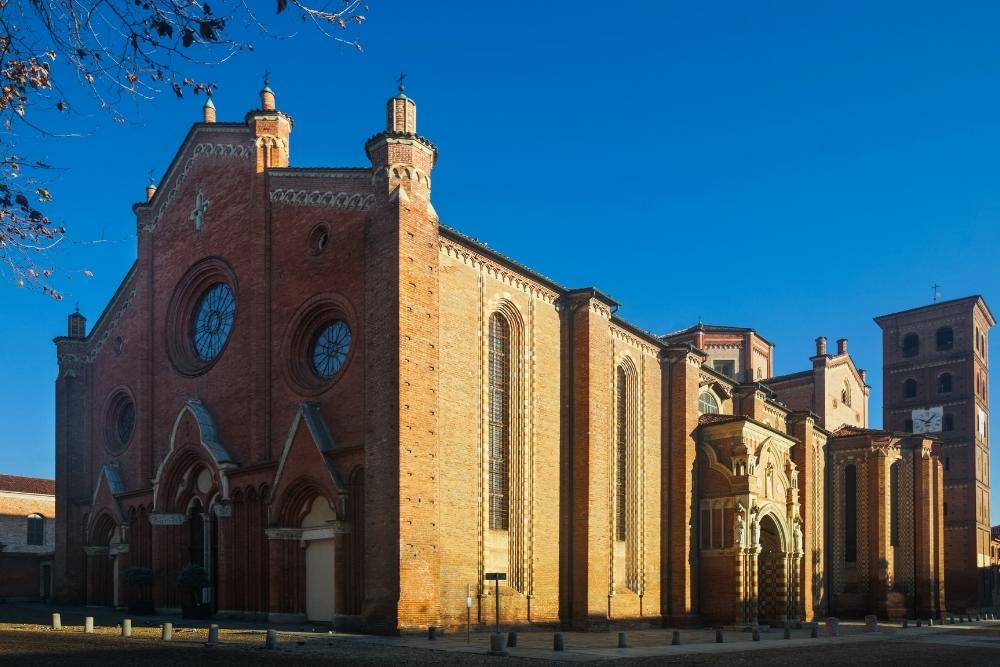
The tour continues along Corso Alfieri to the Gothic cathedral of Santa Maria Assunta, the largest cathedral in the Piedmont region. Built in the 14th century, here you will find sculptures, frescoes, and paintings of great finesse, including important works of art from the Renaissance period by the painter Gandolfino d’Asti.
Other churches in Asti include Santa Maria Nuova, the Baptistery of St. Peter, the Baroque church of St. Catherine, and San Pietro in Consavia, where the archaeological museum is located. Some churches are closed, except for religious services, so it’s a good idea to check their opening hours in advance at the tourist information office. Your guide will point out some medieval towers built when Asti was a significant power, and influential families in the city erected these buildings.
Asti, the city of 1000 towers
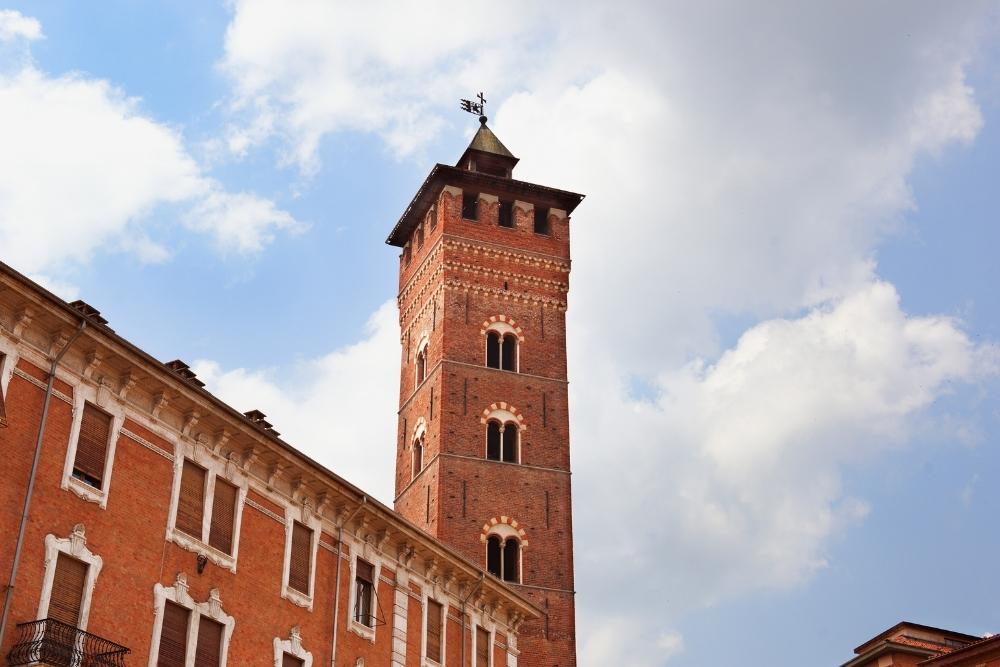
As a result, Asti became known as the “City of 100 towers”. The Troyana Tower in Piazza Medici is one of the city’s main symbols and, at almost 44 meters high, the tallest in Piedmont.
Only one tower is open to the public, and it is well worth climbing it to see the enchanting panorama of the city (it is open every weekend from April to October).
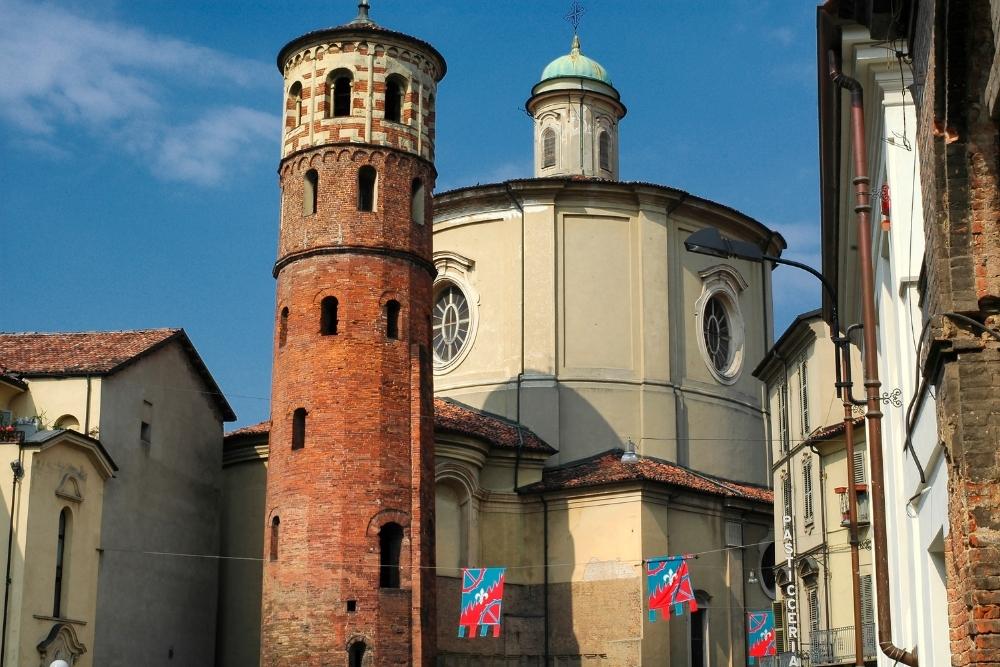
The Red Tower (Torre Rossa), once part of a Roman gate, is known as the place where Asti’s patron saint, San Secondo, was imprisoned before being beheaded for his beliefs. He is said to have been martyred in 119 AD, on the site where the church of San Secondo stands today.
Palazzo Mazzetti
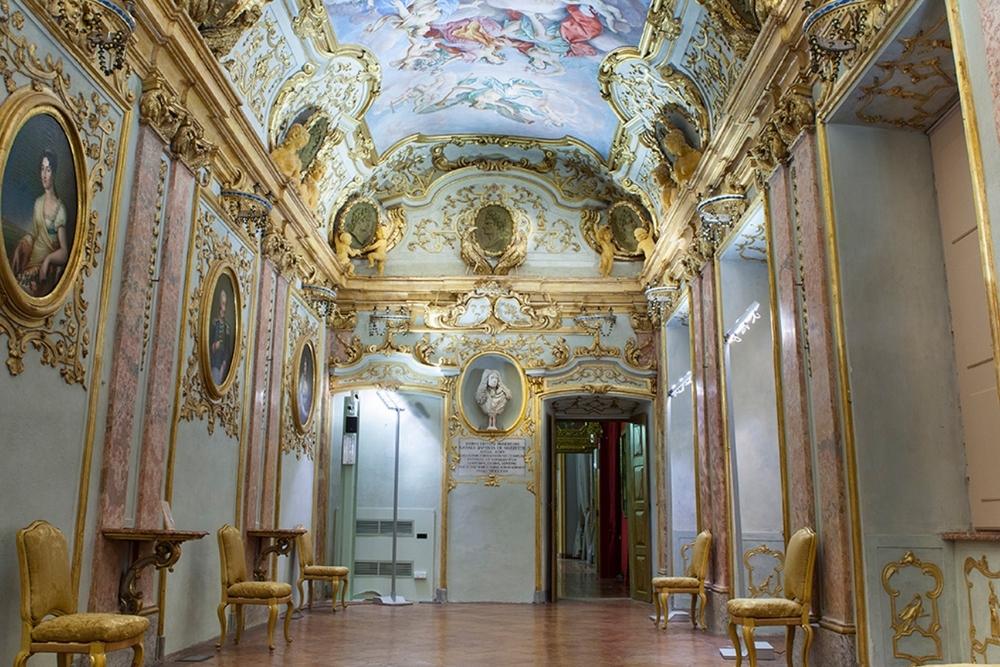
Among the palaces of the early modern age in Asti, Palazzo Mazzetti is one of the most beautiful. Previously owned by the powerful Mazzetti family, this building is a testament to their wealth. The building is now entirely open to the public and provides a good insight into the former lifestyle of a prominent Asti family. It houses the Civic Art Gallery, following a long and exquisite restoration. Additionally, the exhibit’s interest is enhanced by the value of the historic surroundings in which they are located: the place almost looks like a royal palace.
Piazza Alfieri, in Asti
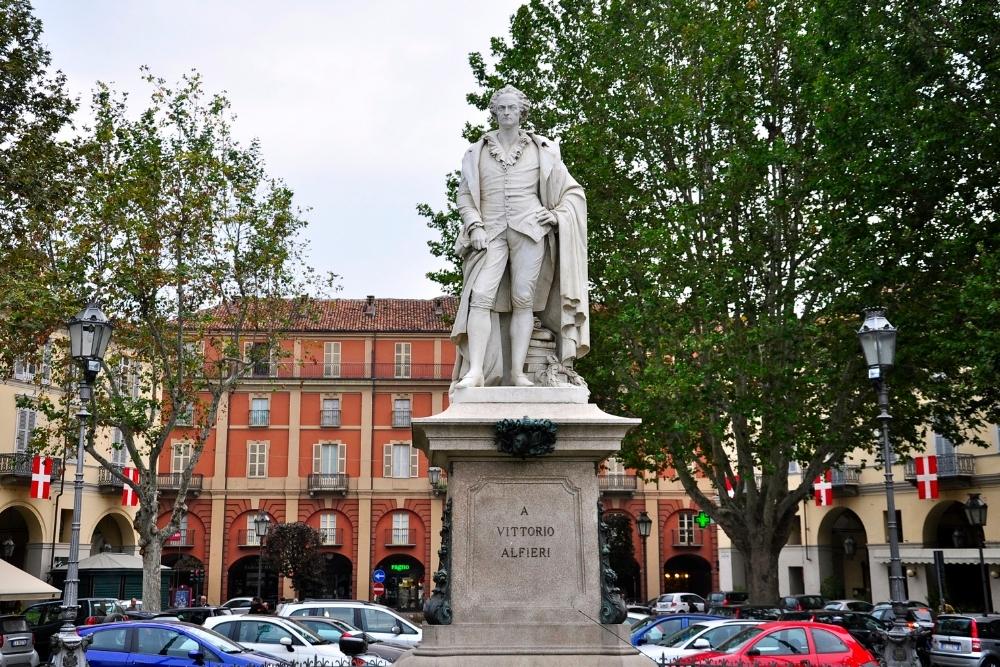
Wander through a lively, triangle-shaped piazza named after a famous Italian poet from the 18th century. The Vittorio Alfieri Monument by Giuseppe Dini is a marble and granite monument located on the edge of the old town and features an exceptional example of 19th-century urban design. In addition to hosting the famed Palio di Asti each year, Piazza Alfieri hosts a weekly food market.
Palio di Asti, a fabulous medieval festival
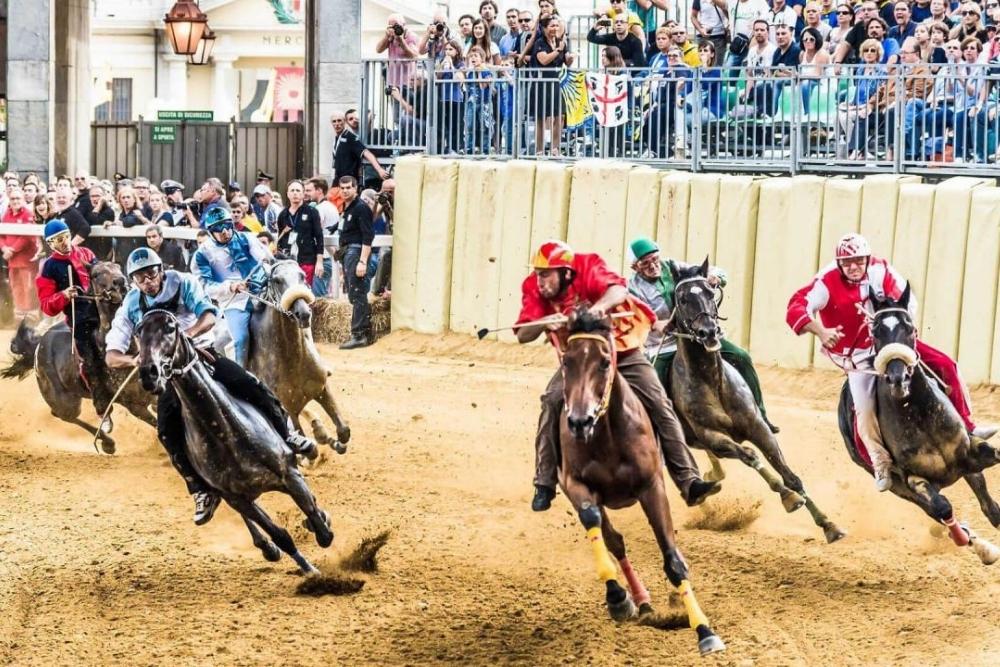
“The Palio” takes place on the first Sunday of every September in the central square of Asti (Piazza Alfieri). Basically, it’s a race for barefoot horses of an ancient tradition: there’s evidence of the first contest dating back to 1275.
Although it is a horse race, it is not an ordinary event: every morning, there are parades of the horses racing, as well as of the locals from the districts participating in the race – every district is represented by a horse.
In the morning, a spectacular scenic show-parade is held along the main streets of Asti to showcase the different districts that will contest for the Palio. People who participate in the parade wear medieval costumes since the parade’s purpose is to bring to life different medieval authorities and historical figures from the past.
During the afternoon, it’s the actual race where the passions of the different fighting districts get really heated up! There is no doubt that the Palio is a beautiful event that attracts many visitors each year.
Local Asti gastronomy is delicious
It’s time to stop for lunch at Tuit, a café part of the Eataly chain of restaurants. You can opt for a fresh salad and a chocolate ice cream. For dinner, it’s worth trying Tacabanda, near the Alfieri Theatre. The restaurant is in an old cellar with vaulted ceilings, but it’s a bright, modern Marilyn Monroe-style location, and the wine collection here is impressive.
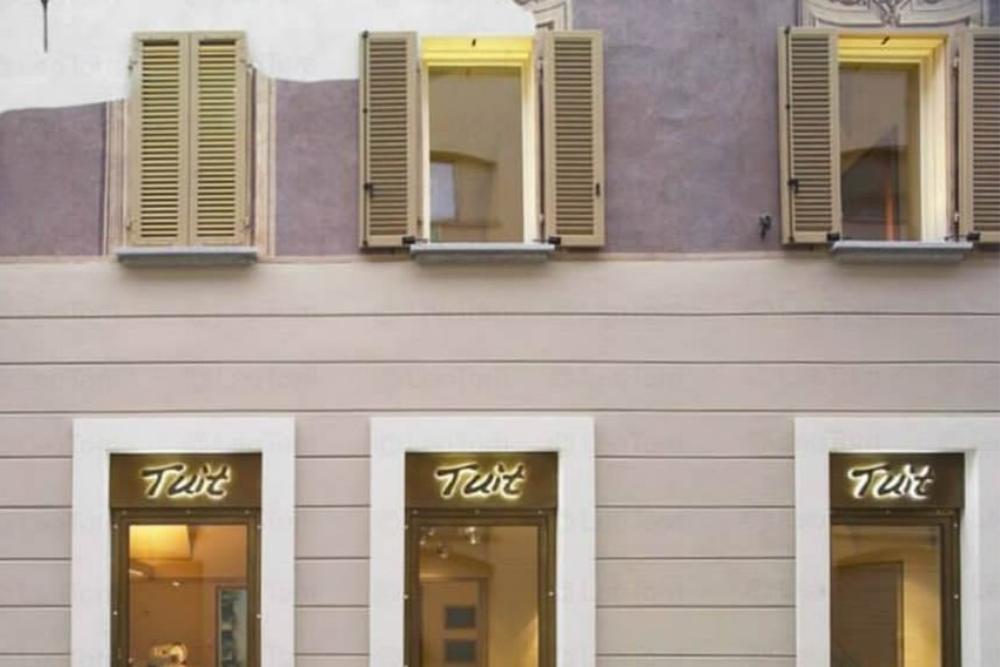
On another evening, you can head to the Magic Flute, located in Hotel Ristorante Reale, where you can have an elegant dinner of fish seasoned with olives, potatoes, and tomatoes.
Traditional local foods include hazelnuts, salami, meat, goat cheese, and truffles. Vegetables are laid out in colorful bunches in the open-air markets: artichokes, asparagus, peppers, tomatoes, “coconut” artichokes (so-called because of their shape). Apples, peaches, and cherries are everywhere, and of course, wines. The vineyards in this area produce over 40% of Piedmont’s wines, including the famous Asti Spumante.
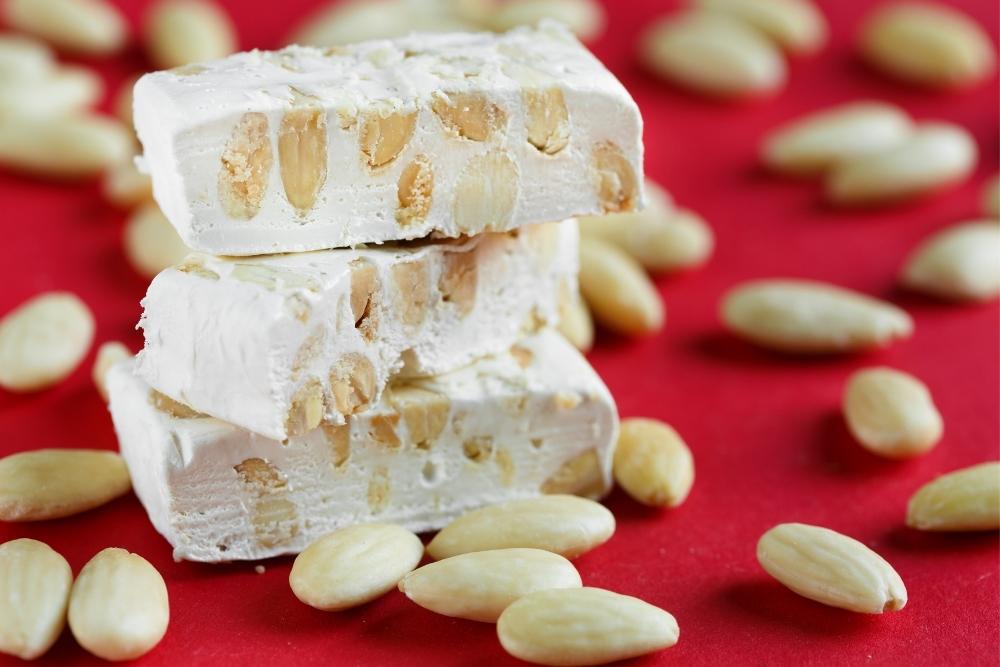
All these and more are celebrated during the Festival delle Sagre, which takes place in autumn. Thousands of regional products are displayed at this impressive fair in Campo del Palio. Whether you come here during the festival or not, don’t leave without tasting the sweets of the Asti region. The favorite, which sells out in the cold season, is Torrone, a nougat made from honey, hazelnuts, egg white, and vanilla. Giordanino, the oldest sweet shop in the area, sells such sweet delights and traditional “amaretti” and others.
The famous Asti Spumante is not produced in Asti
Even though the famous sparkling Asti Spumante wine is an important asset for the economy of the Piedmont region, many visitors are surprised to discover that there aren’t any wineries in central Asti. The Asti Spumante wine is mostly produced in Canelli, about 30 kilometers south of Asti.
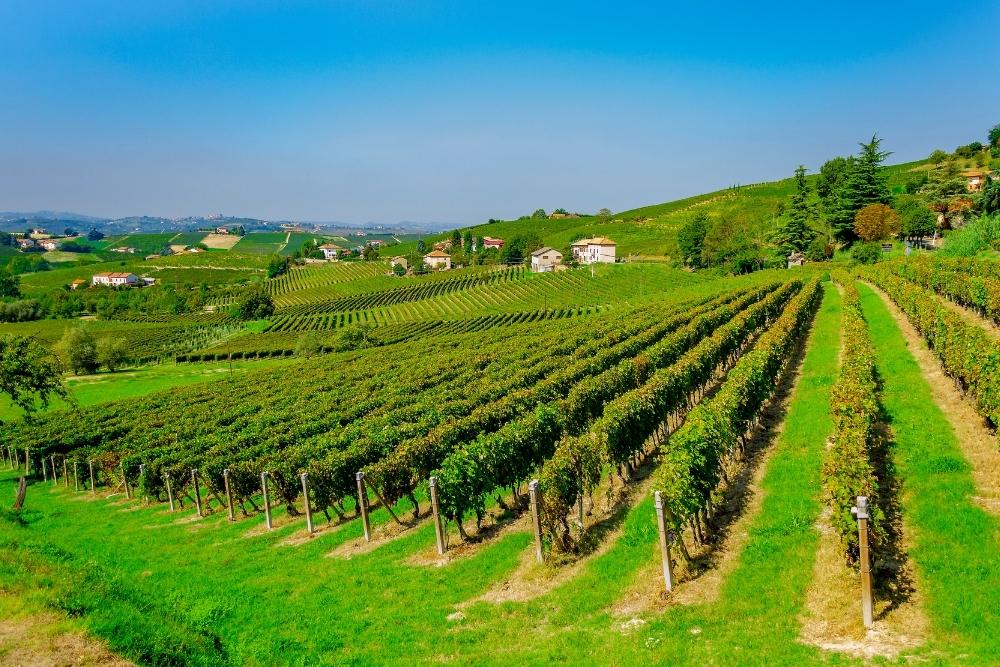
It is good to know that Asti Spumante is produced from the Moscato grape, the oldest grape variety in the world. In most people’s opinion, these grapes produce the most “grapey” aromas. It is a perennial grape widely grown, but most well known in northern Italy. In the Piedmont region, this grape variety is believed to have been around for centuries.
If you opt to travel on your own, it’s a good idea to carry a pocket guide to Asti and a map, which you can get for free from the tourist office in Piazza Alfieri. As for the accommodation, you can find many hotels in Asti, or hotels near Asti, Italy, for any budget.
In conclusion, the city of Asti is a destination worth visiting. With its rich history and wonderful attractions, it’s an excellent place in Piedmont to spend time and explore. If you’re looking for a new adventure, Asti should be on top of your list.
You may also like: A visit to ancient Pompeii – what to do and what to see

